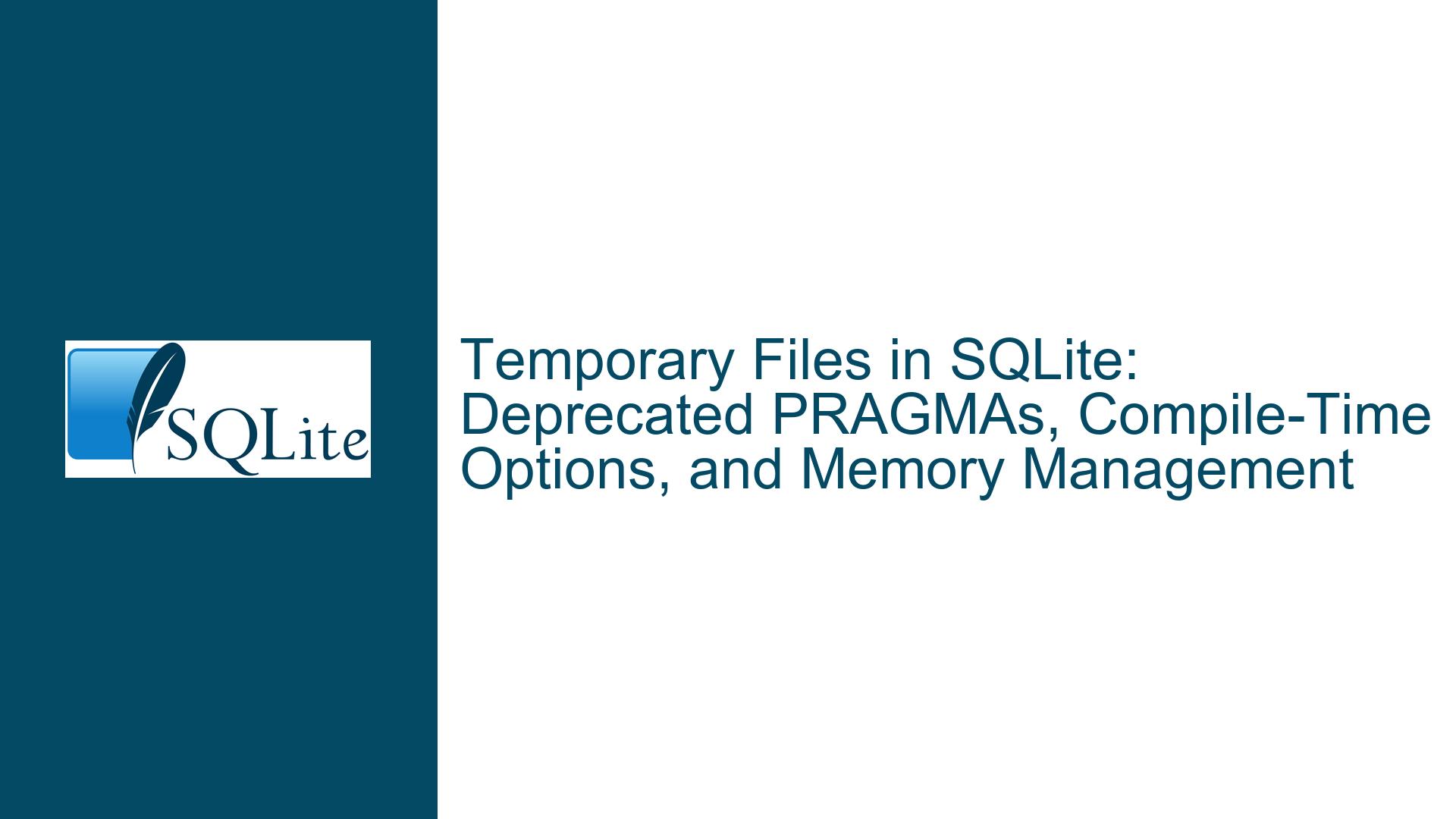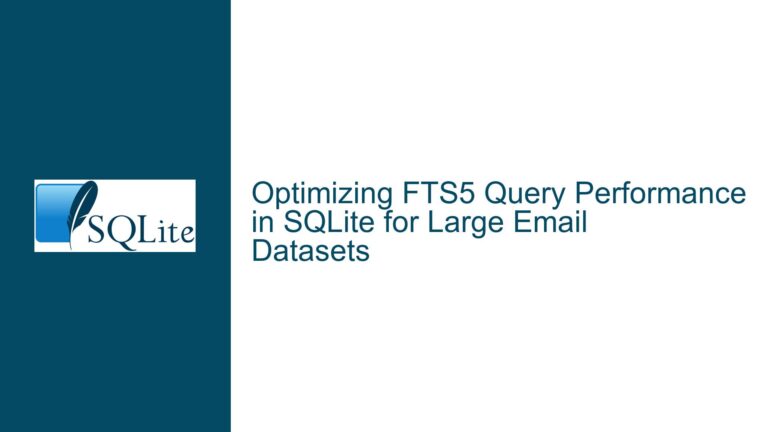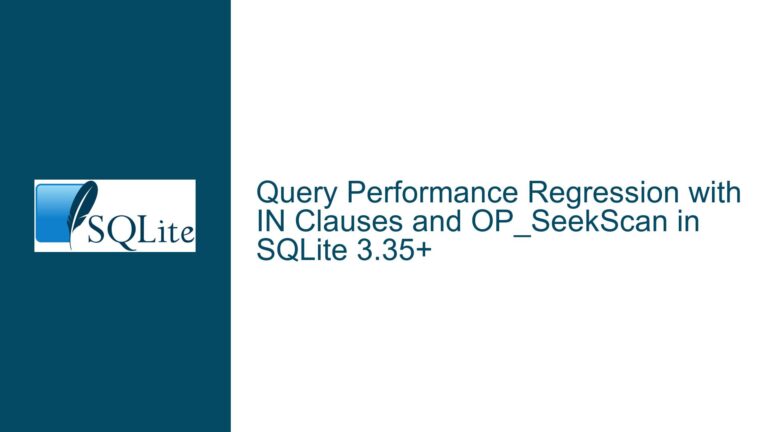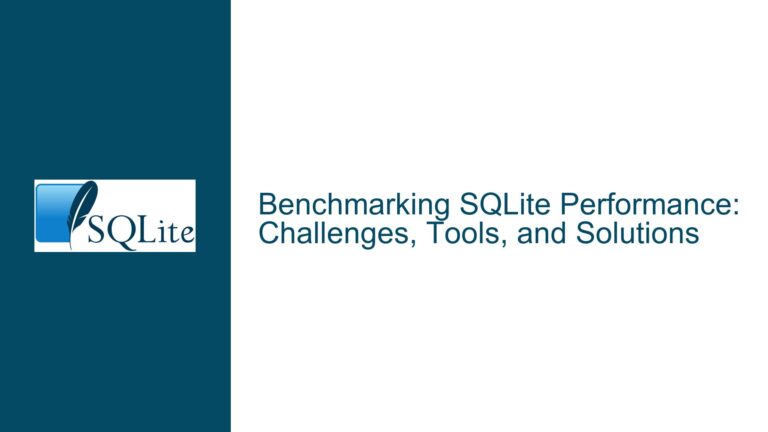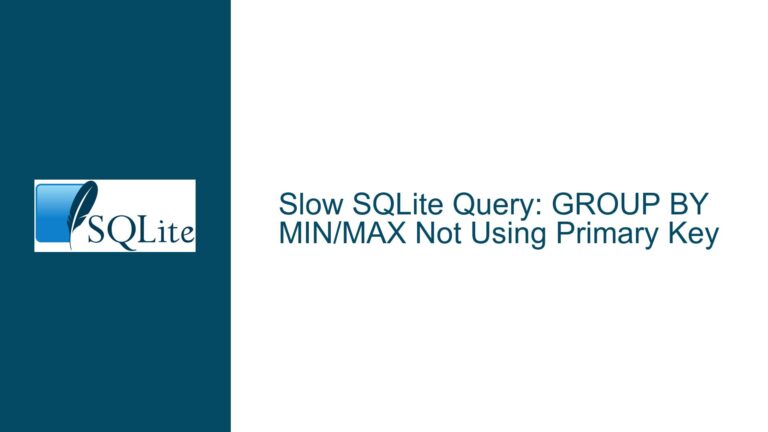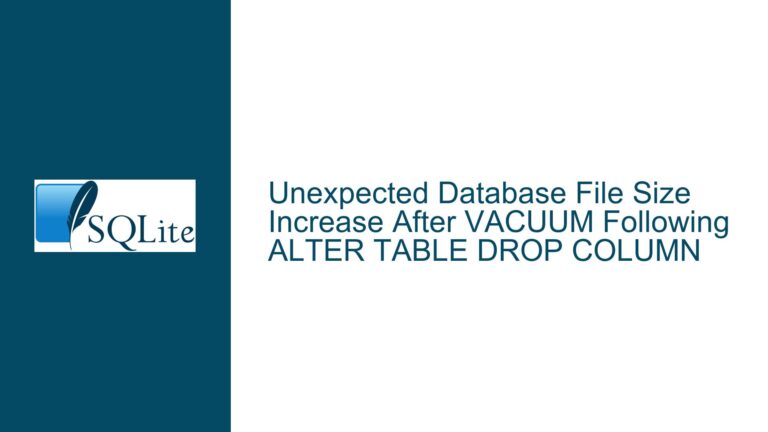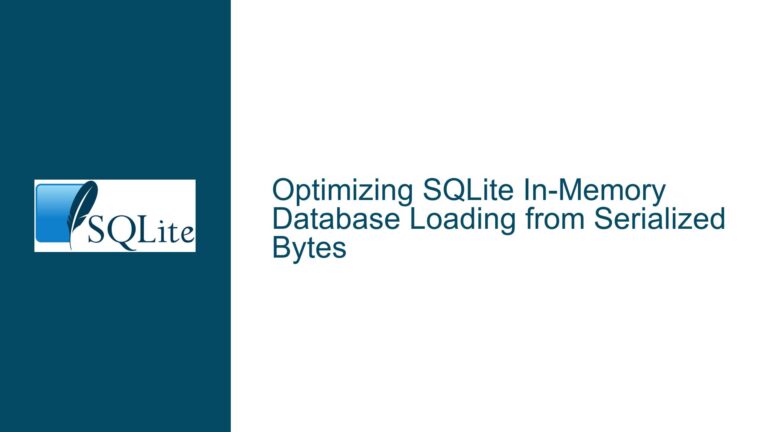Temporary Files in SQLite: Deprecated PRAGMAs, Compile-Time Options, and Memory Management
Deprecated PRAGMA temp_store_directory and sqlite3_temp_directory Global Variable
The handling of temporary files in SQLite has evolved over time, and certain legacy mechanisms for controlling their storage location have been deprecated. The PRAGMA temp_store_directory and the sqlite3_temp_directory global variable are two such mechanisms. The PRAGMA temp_store_directory was used to specify the directory where SQLite would store its temporary files, but it has been deprecated due to its limitations and potential security risks. Similarly, the sqlite3_temp_directory global variable, which allowed developers to set the temporary file directory programmatically, is strongly discouraged for the same reasons.
The deprecation of these mechanisms means that SQLite no longer provides a straightforward way to specify the location of temporary files at runtime. This decision was made to simplify the API and to encourage the use of more robust and secure methods for managing temporary files. However, this does not mean that SQLite has completely removed the ability to control where temporary files are stored. Instead, the focus has shifted to compile-time options and other configuration settings that offer more control over temporary file storage.
The SQLITE_OMIT_DEPRECATED compile-time option is another factor to consider. When this option is enabled, deprecated features, including the PRAGMA temp_store_directory and the sqlite3_temp_directory global variable, are excluded from the build. This means that if you compile SQLite with SQLITE_OMIT_DEPRECATED, you will not have access to these deprecated features, and you will need to rely on other mechanisms for managing temporary files.
SQLITE_TEMP_STORE Compile-Time Option and Memory Management
The SQLITE_TEMP_STORE compile-time option plays a crucial role in determining how SQLite handles temporary files. This option allows you to specify whether temporary files should be stored in memory or on disk. The SQLITE_TEMP_STORE option can take several values, each of which affects the behavior of SQLite in different ways.
When SQLITE_TEMP_STORE is set to 2, SQLite will attempt to store temporary files in memory, but it will fall back to disk if it runs out of memory. This behavior is particularly useful in environments where memory is limited, as it allows SQLite to continue operating even when memory resources are exhausted. However, it also means that SQLite may write temporary data to disk, which could impact performance.
When SQLITE_TEMP_STORE is set to 3, SQLite will always store temporary files in memory, regardless of the available memory resources. This setting is ideal for environments where memory is abundant and performance is a critical concern. However, if SQLite runs out of memory, it will not fall back to disk, which could lead to out-of-memory errors.
The interaction between the SQLITE_TEMP_STORE compile-time option and the operating system’s memory management is another important consideration. When SQLite stores temporary files in memory, it relies on the operating system to manage memory resources. If the system runs out of memory, the operating system may swap memory to disk, which could impact performance. However, this behavior is outside of SQLite’s control, and it is up to the operating system to decide how to handle memory resources.
Implementing PRAGMA journal_mode and Database Backup Strategies
Given the limitations and potential pitfalls associated with managing temporary files in SQLite, it is important to implement robust strategies for handling temporary data. One such strategy is to use the PRAGMA journal_mode setting to control how SQLite handles transaction journals. The PRAGMA journal_mode setting can be used to specify whether SQLite should use a rollback journal or a write-ahead log (WAL) for transaction management.
The rollback journal is the default journal mode in SQLite, and it works by writing changes to a temporary file before applying them to the database. This approach ensures that the database can be restored to its original state in the event of a crash or power failure. However, the rollback journal can also lead to performance issues, particularly in environments where disk I/O is a bottleneck.
The WAL mode, on the other hand, offers several advantages over the rollback journal. In WAL mode, SQLite writes changes to a separate WAL file, which allows multiple readers to access the database simultaneously while a single writer applies changes. This approach can significantly improve performance in multi-threaded environments, as it reduces contention for database resources. Additionally, the WAL file is typically smaller than the rollback journal, which can reduce the amount of disk space used by temporary files.
Another important consideration is the use of database backups to protect against data loss. SQLite provides several mechanisms for creating database backups, including the sqlite3_backup API and the .backup command in the SQLite shell. These tools allow you to create a copy of the database while it is in use, which can be useful for creating point-in-time backups or for migrating data between databases.
When implementing a backup strategy, it is important to consider the impact of temporary files on the backup process. For example, if SQLite is using a rollback journal, the journal file must be included in the backup to ensure that the database can be restored to a consistent state. Similarly, if SQLite is using WAL mode, the WAL file and the associated shared-memory file must be included in the backup.
In conclusion, managing temporary files in SQLite requires a careful balance between performance, reliability, and security. By understanding the implications of the SQLITE_TEMP_STORE compile-time option, the PRAGMA journal_mode setting, and the various backup strategies available, you can ensure that your SQLite databases are both efficient and resilient. Whether you are working in a memory-constrained environment or a high-performance multi-threaded application, these tools and techniques can help you achieve your goals while minimizing the risks associated with temporary file management.
